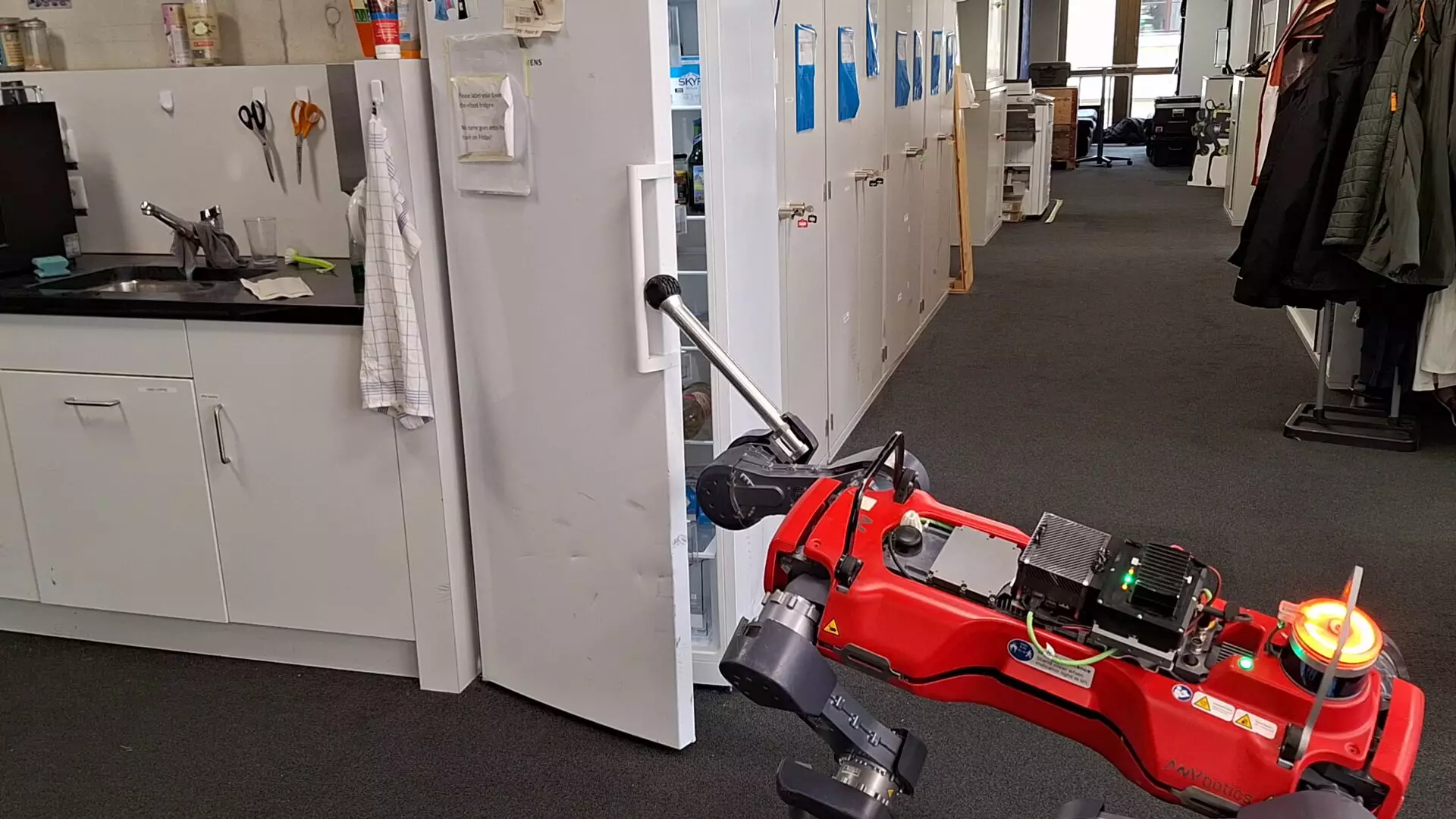The field of robotics has seen significant advancements in recent years, with robotic systems evolving from simple and stiff robots to more sophisticated soft, humanoid, and animal-inspired robots. Among these, legged robots, particularly quadrupeds, have shown great promise in performing tasks such as exploration and object manipulation. However, most legged robots still face limitations in terms of interacting with objects and humans in their surroundings. In a recent study conducted by researchers at ETH Zurich, a new reinforcement learning-based model was introduced to address these limitations and enable four-legged robots to interact with their environments in innovative ways.
The team of researchers at ETH Zurich aimed to develop a versatile approach that would allow legged robots to tackle a wider range of real-world problems using reinforcement learning. This technique, which is well-known in the robotics community, involves training a robot to bring its foot to a desired position through simulations, thereby improving its skills over time. By adjusting parameters in the simulations, such as the placement of the foot and the level of disturbance faced by the robot, the researchers were able to make the robot more robust to the uncertainties it would encounter in the real world.
In initial experiments, the researchers’ model demonstrated impressive performance, allowing a quadruped robot to successfully complete object manipulation tasks that were previously challenging. These tasks included opening a fridge door, carrying objects, pressing a button, pushing obstacles out of the way, and collecting rocks from the floor. Unlike other approaches that focus on enhancing the object manipulation skills of legged robots, this model teaches robots to use their entire bodies when necessary, such as leaning forward to reach a button with one of its feet. Additionally, the model was able to teach the robot to hop in order to reach targets that were a few meters away.
The new computational model developed by the researchers shows great potential for broadening the real-world applications of legged robots. Once further improved and trained on additional tasks, the model could enable robots to independently push buttons, move levers, and open doors, expanding their application range in scenarios such as warehouse inspections and infrastructure maintenance. The researchers are continuing their work to enhance the model’s autonomy and automate more tasks, including object grasping and opening different types of doors.
The advancements in reinforcement learning-based models for legged robots present exciting opportunities for enhancing the object manipulation skills of these robots. By enabling robots to interact more effectively with their environments and perform a wider range of tasks, such models pave the way for the increased use of legged robots in various real-world applications. As researchers continue to refine and optimize these models, the capabilities of legged robots are expected to expand even further, opening up new possibilities for automation and robotics in diverse fields.


Leave a Reply